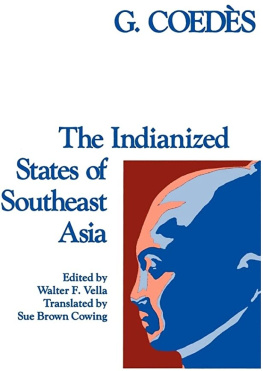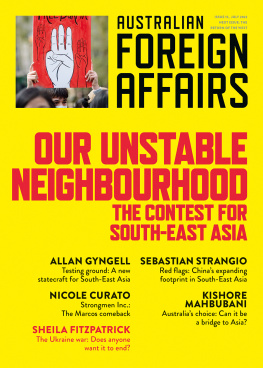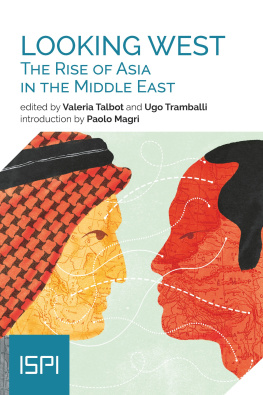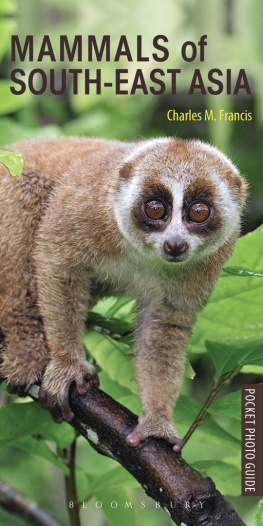Translated from the French Les peuples de la pninsule indochinoise
First published in Great Britain in 1966 by Routledge & Kegan Paul Limited
This edition first published in 2015
by Routledge
2 Park Square, Milton Park, Abingdon, Oxon, OX14 4RN
and by Routledge
711 Third Avenue, New York, NY 10017
Routledge is an imprint of the Taylor & Francis Group, an informa business
Dunod, Paris, 1962
English Translation 1966 H. M. Wright
All rights reserved. No part of this book may be reprinted or reproduced or utilised in any form or by any electronic, mechanical, or other means, now known or hereafter invented, including photocopying and recording, or in any information storage or retrieval system, without permission in writing from the publishers.
Trademark notice: Product or corporate names may be trademarks or registered trademarks, and are used only for identification and explanation without intent to infringe.
British Library Cataloguing in Publication Data
A catalogue record for this book is available from the British Library
ISBN: 978-1-138-89258-3 (Set)
eISBN: 978-1-315-69792-5 (Set)
ISBN: 978-1-138-90137-7 (Volume 4)
eISBN: 978-1-315-69780-2 (Volume 4)
Publishers Note
The publisher has gone to great lengths to ensure the quality of this reprint but points out that some imperfections in the original copies may be apparent.
Disclaimer
The publisher has made every effort to trace copyright holders and would welcome correspondence from those they have been unable to trace.
The Making
of
South East Asia
by
G. CDS
Translated by
H. M. WRIGHT
Translated from the French
LES PEUPLES DE LA PNINSULE INDOCHINOISE
Dunod, Paris, 1962
Published in Great Britain
by Routledge & Kegan Paul Limited
Broadway House 6874 Carter Lane
London, E.C.4
English translation
H. M. Wright, 1966
Printed in Great Britain
by Cox & Wyman Limited
London, Fakenham and Reading
No part of this book may be reproduced in any form without permission from the publisher, except for the quotation of brief passages in criticism
DURING THE PAST FIFTEEN YEARS a number of general works on the history of South East Asia and of more specialized histories of Indochina have appeared. In most of them, the first fifteen centuries are dismissed in a few chapters, or even a few pages, as a sort of preamble to the following five centuries, which are treated from a European rather than from an Asian point of view let alone from the standpoint of an individual Asian country. Moreover only a few pages are devoted to the origins and prehistory of the peoples of Indochina and Indonesia and to the nature of their contacts with the two great Asian civilizations the Indian and the Chinese.
By way of contrast, my history of The Hinduized States of Indochina and Indonesia (Les tats Hindouiss dIndochine et dIndonsie) ends with the taking of Malacca by the Portuguese in 1511, and deliberately ignores later events. I know of no work in which a balance is struck between the account given of the events prior to this date and the account of those that followed.
It is this lack which the following pages attempt to remedy. The area covered is restricted to the Indochinese peninsula, to the exclusion of the Malay Peninsula and Indonesia. The relations between Indonesia and Indochina were never as close or as historically important as the relations the Indochinese States had with each other, and the two areas followed separate paths of development because of the greater impact of Islam on Indonesia, and because Europeans arrived and started colonizing there earlier than on the continent. As for the Malay Peninsula, its early history of which, incidentally, little is known is closely linked with that of Indonesia, with which it is to some extent related geographically.
So here only Indochina, in the sense of the Indochinese peninsula (the India beyond the Ganges of the ancient world), will come into question a crossroadsgroups came into contact with each other and mixed with each other, and where since ancient times the two main civilizations of Asia have confronted each other. In Indochina these civilizations were transformed, in varying degrees, through contact with the indigenous societies, and the civilizations resulting from this contact reacted upon each other and were subsequently enriched or changed by later influences from abroad, such as Buddhism from Ceylon, and European civilization.
These Indochinese civilizations display great variety, but have a number of features in common. There is a unity in diversity to quote an old Indonesian saying inscribed by a Vietnamese writer at the beginning of his Histoire de lAsie du Sud-Est (History of South East Asia) which, in the linguistic field for instance, can be seen in a certain family resemblance acquired by languages which were originally of different stock; or, in the legal sphere, in the survival over the centuries of certain general trends which have withstood the changes brought about by foreign influences.
The birth and development of the Indochinese civilizations can only be understood if seen in the light of certain geographical facts, certain prehistorical and ethnological data, and certain historical events such as wars, conquests, internal revolutions, and the repercussions of large-scale upheavals in neighbouring countries. It was Chin Shih-huang-tis policy of commercial expansion which gave rise to Chinese colonization of the Red River delta, and it was the Mongol conquests which brought about the consummation of the decline of Indian cultural influence and the ruin of the old Indianized kingdoms. On the other hand, and whatever some people may say, the course of political and cultural history has been influenced or directed into certain channels by forceful personalities such as Aniruddha of Burma, Jayavarman VII of Cambodia, and Rama Khamheng of Thailand. Hence a large part of the present work consists of the kind of history known as histoire vnementielle or the history of events.
I am fully aware that history of this kind, with its enumeration of kings, wars, and changes of frontier, and its descriptions of customs at Court and among the ruling classes, is no more than a skeleton that lacks both body and soul, since it gives no account of the social environment, of popular customs and beliefs, of economic trends and social changes, or of the hidden forces which
I thought it might facilitate the task of future research workers if I were to sift out the information at present available about the main events and historical personages which stand out like landmarks in the national histories of the Indochinese States, and try to introduce some order into it, straightening out the confused tangle of events and clarifying some of the obscurities, while at the same time highlighting the discussion with a few ideas concerning the institutions, religions, arts, and other cultural aspects in so far as these are known. This book, which is intended for the general public rather than for specialists, may therefore be regarded as a sort of outline sketch indicating the lines on which a future balanced history of Indochina might be planned.












